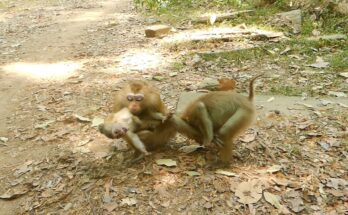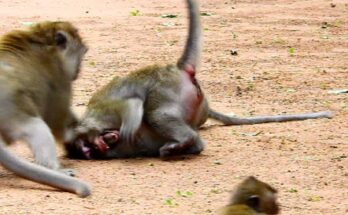When captive monkeys are released into the wild, the results are often heartbreaking and complex. While it may seem like an act of kindness to return them to nature, the reality is that most captive monkeys are not equipped to survive in the wild. Having spent their lives in enclosures or around humans, they lose the instinctive behaviors necessary for finding food, avoiding predators, and socializing with wild troops.
In captivity, monkeys depend entirely on humans for food, safety, and care. They are fed regularly and live without the constant threat of danger. But once released into the wild, this safety disappears. Many cannot identify edible fruits or plants, and some even approach humans or villages again in search of food, which leads to conflict and possible harm. Without survival skills, their chances of finding enough to eat or avoiding predators drop dramatically.
Social structure is another serious problem. Wild monkeys live in tight, complex hierarchies. A released monkey that doesn’t understand social cues or troop behavior may be rejected or attacked by wild groups. In some cases, the stress and loneliness can lead to depression, injury, or even death.
Additionally, captive monkeys may carry human diseases that are dangerous to wild populations. Introducing them into natural habitats can spread infections and disrupt delicate ecosystems.
Because of these challenges, wildlife experts strongly advise against releasing captive monkeys directly into the wild. Instead, rehabilitation centers carefully train them for survival—teaching foraging, climbing, and group interaction before gradual release. Even then, success rates remain low.
In short, while releasing captive monkeys seems compassionate, it often leads to suffering. True compassion lies in responsible rehabilitation and lifelong sanctuary care, ensuring the monkeys live safely and with dignity.


